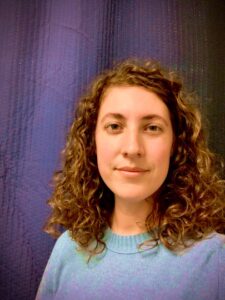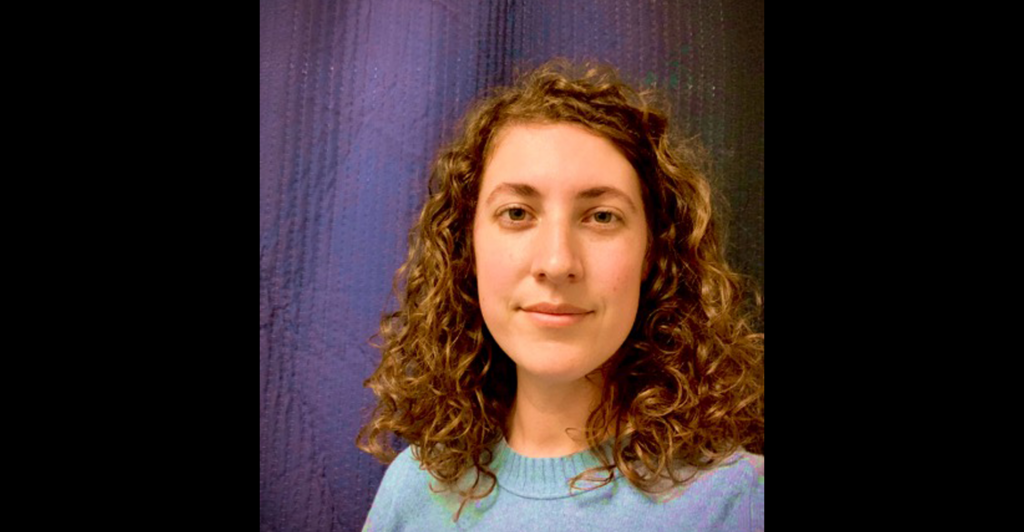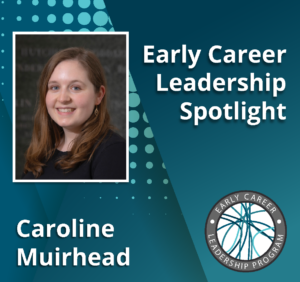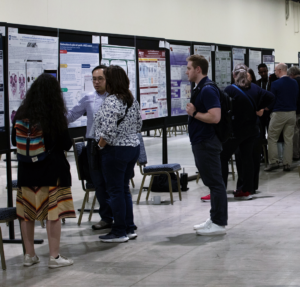We’re taking time to get to know the members of the GSA’s Early Career Scientist Committees. Join us to learn more about our early career scientist advocates.

Jillian Freese
Accessibility Subcommittee
J. Craig Venter Institute
Research Interest
My unshakeable desire to be a scientist was cemented when I first began SCUBA diving. Sinking below the waves and into the kelp forests off the coast of California introduced me to a world where everything was intimately intertwined, where each organism plays multiple roles in maintaining the physical structure of the ecosystem and balancing the food web. The idea that this job might involve SCUBA diving and being at the beach didn’t hurt either. Despite spending most of my time in a lab instead of on the beach, I was ready to dive deep into solving the scientific problems found in this microcosm.
My interests center around unraveling the relationships between organisms—whether they be mutualistic, commensal, or parasitic—and the relationship between the organism and its environment. My undergraduate and graduate research experiences allowed me to explore these interactions in the effects of ocean acidification on larval development, the exchange of nutrients between marine bacteria and microbial eukaryotes, and during my Ph.D., the development of algal parasites—species of non-photosynthetic red algae that parasitize other closely related free-living red algae. The complexity of their life cycles and relationship to their host were particularly intriguing. My graduate research used a combination of morphological and molecular approaches to concentrate on the interactions between red algal host and parasite in order to understand the physical and genetic mechanisms that enable a successful infection and how they change throughout parasite development.
My postdoctoral research is focused on fungal pathogens, which are globally distributed and the fifth largest cause of death worldwide. Some species of fungi are thermally dimorphic, meaning that they can switch their vegetative morphology between unicellular yeast and multicellular hyphal (filamentous) forms in response to a change in temperature. One such pathogen, Histoplasma capsulatum, is the causative agent of histoplasmosis, one of the most prevalent pulmonary fungal infections in the United States. Histoplasma is globally distributed but considered endemic in certain regions of North and South America. In the United States, Histoplasma is found in the eastern and central United States, especially in the Ohio and Mississippi River Valleys. Morphologically, Histoplasma transitions between a multicellular hyphal form in the soil to a unicellular budding yeast because of the temperature of their mammalian hosts. In addition to the morphological switch, temperature also serves as a signal, initiating Histoplasma virulence mechanisms. As temperature is an imperative cue for morphology and virulence in Histoplasma and other dimorphic fungi, I’m investigating aspects of their thermosensing mechanisms, concentrating on the heat shock response and heat shock protein 90 and its role in regulating cell morphology and pathogenicity.
As a PhD-trained scientist, you have many career options. What interests you the most?
I have chased and continue to strive for a career in research because of my love of brainteasers and my fascination with the way organisms interact with each other and the world. I think of genomic and other “-omics” research like a giant puzzle, where all of the puzzle pieces are hiding in the cell and can be put together in a million different combinations. In the lab, I enjoy optimizing experiments and trying to plan the best approach to answering the questions posed. My experiences have largely been focused on answering fundamental questions through basic research, and I am looking to increase the impact of my research and help translate my findings into next steps by incorporating more translational research into my current and future projects.
I plan to develop and grow a research program (in an academic, governmental, or non-profit sector) that contributes to our understanding of medical and environmental pathogens and parasites. Compared to other pathogens (like bacteria and viruses), fungal pathogens are critically understudied given their impact on global health. As common causative agents of disease, with intricate dependencies with their host, there is still much to learn about these pathogens to significantly improve our approach to treating and preventing fungal infections. I plan to use my background in parasite research to help address some of the biggest challenges in the field—rapid diagnosis of fungal infection and effective treatments or preventative measures—by looking at the environmental signals that trigger virulence mechanisms and the resulting morphological and genetic changes made in the organism. I will continue to look into the pathways required for infection and integrate epidemiological data to more holistically discern the relationship between host and parasite.
Throughout my undergraduate and graduate career, I was supported in my scientific endeavors by my community and network. Because of this, I feel beholden to pass along my experiences and encouragement to those coming up behind me. I’ve made it a priority to participate in outreach events and mentor undergraduate students. I received the L. H. Tiffany Award from the Phycological Society of America for raising public awareness and communicating the importance of algae for my illustrated children’s book, A is for Algae. As president of the first satellite chapter of the Society for Women in Marine Science, I helped build a program that gave others access to these experiences and tools for scholastic and career success. I know firsthand how crucial it is to have a representative role model and strong mentors to succeed in STEM, which is why I have and will continue to use my background, training, and community service to make the path for minority and female scientists more inclusive.
In addition to your research, how do you want to advance the scientific enterprise?
Unlike gender and race, there have been very few efforts to improve disability inclusion in STEM, in part because there have not been enough people with disabilities in positions to elevate the issue. From 2008 to 2018, the number of NIH grants submitted with at least one disabled PI declined, representing just 1.2% of all applications. Even though 26% of the United States population identifies as disabled, less than 6% of postdoctoral scholars in STEM do. It is essential that we recognize that scientific research is rarely designed to accommodate scientists with medical conditions or disabilities, which reduces the diversity of STEM when people leave or are pushed out because of discrimination or poor treatment.
It took many years before I recognized myself as a disabled scientist. I was able to either hide the effects of my connective tissue disorder or play it off as no big deal, even when it was. I never wanted to be the injured or disabled one, or be treated differently, so I would hide how I was feeling and push through the pain in order to act like everyone else. As my condition worsened in graduate school, I started undoing this internalized ableism and was able to see the disservice I was doing to myself and others who may have also needed accommodations but didn’t request them because of internal or external biases.
For many disabled scientists, disclosing their disability requires them to weigh the benefits of getting legally entitled support against the societal judgment and marginalization that disability carries. When I talk about my disability, because it is often “invisible,” I also have to consider how others define or imagine disability and how I’ll be treated once they know. I am a better scientist because of my disability, not in spite of it. Functioning in my day-to-day life requires creating testable hypotheses for tasks that I have difficulties with, testing it, and examining the results. My disability has given me empathy, patience, and skills for problem-solving that benefit my professional and personal lives.
Because I have been able to conceal my disability, I have actively chosen to be open about the hurdles facing disabled scientists and advocate for accessibility in order to increase representation and generate greater equality for disabled and minority scientists. We must recognize that disability does not mean inability. I have and continue to serve on university and scientific committees to bring awareness to institutional barriers and propose solutions to increase accessibility. I hope that my presence, actions, and support for other disabled scientists increase the visibility of disability in STEM and increase its inclusion in diversity measures and the laboratory.
As a leader within the Genetics Society of America, what do you hope to accomplish?
Disability is often touted as the only minority group you can join at any time of your life. Because of this, the disability community is incredibly diverse and includes a wide range of conditions which may or may not be apparent to co-workers or managers. Even with an increase in diversity, equity, and inclusion (DEI) efforts over the last decade, disabled individuals often feel overlooked.
While accommodations can be seen as a special requirement made to benefit a minority, they are often beneficial for the population as a whole. By improving accessibility of the Genetics Society of America’s communications, events, and programs, we aim to make it understandable and usable by the greatest number of people, regardless of their need for accommodations. While the amount of benefit derived from these practices will vary, many of these accommodations are simply good communication principles (e.g., captions, image descriptions, color-blind-friendly color palettes) and enable everyone to engage with the content. As a disabled scientist, I know firsthand how important visibility and engagement can be in the process of increasing equity and diversity in science. As co-chair of the Accessibility Subcommittee, I know that we have been active in pursuing and supporting a number of accessibility measures taken by the GSA. I will continue to advocate for GSA support for the following resources:
- Consolidate resources for DEI policies to actively include disability as an area of focus. All employers should push to include disabled people in these initiatives. I hope that, by providing these resources, disability will be enthusiastically incorporated into DEI efforts and make STEM a more welcoming and supportive field to disabled and chronically ill scientists.
- Increase the visibility of disabled scientists through inclusion in workshops, panels, seminars, and interviews. This will also help us build a community where disabled and chronically ill scientists can share their experiences and support one another.
- Continue to improve the accessibility of GSA conferences and events and facilitate accommodation requests. It is essential that everyone in the GSA community be able to participate in events without bearing undue risk. We will support GSA efforts to continue offering virtual or hybrid events and increase participation opportunities for virtual attendees.
Previous leadership experience
- Society for Women in Marine Science Chapter Founder/President
- University of Rhode Island Biological and Environmental Science Graduate Student Representative
- Recipient of the Phycological Society of America L.H. Tiffany Award
- Phycological Society of America Communication Committee Member: Social Media Coordinator





